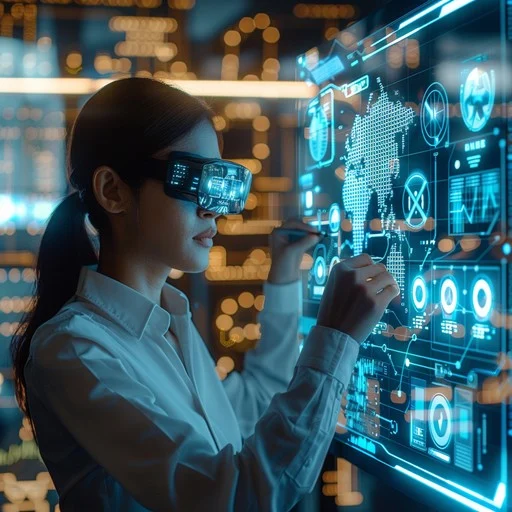Synergy of AR and VR
While augmented reality (AR) and virtual reality (VR) serve different purposes, their combination creates powerful, immersive experiences. The integration of these technologies is driving innovation across industries and reshaping digital interaction.
Real Estate and Virtual Home Tours
In real estate, VR allows prospective buyers to take virtual tours of properties from anywhere in the world. At the same time, AR apps enable users to visualize changes to the space in real time. They can place furniture, test different wall colors, and explore design ideas before making decisions. This mix of virtual exploration and real-time customization makes the home-buying process more engaging and accessible.
Training and Simulation Innovation
In education and professional training, AR and VR provide end-to-end immersive learning. For example, emergency responders can train in realistic VR simulations of disaster scenarios. During these sessions, AR overlays can supply vital data such as nearby equipment or hazardous zones. This combination enhances preparedness and decision-making in high-stress environments.
Challenges and Considerations
Despite the benefits, AR and VR adoption comes with obstacles.
Technical and Financial Barriers
These technologies often require high-performance hardware and software. Devices like VR headsets and AR-enabled equipment can be expensive, making them less accessible for individuals and businesses.
Privacy and Data Concerns
AR and VR systems collect a large amount of personal data for customization. Protecting this data is crucial. Misuse or poor handling raises ethical questions about privacy and user rights.
Risk of Overuse and Isolation
As AR and VR become more engaging, concerns about overuse and addiction grow. These technologies must be used responsibly. A healthy balance between virtual and real-world interaction is necessary for long-term well-being.
The Bright Future Ahead
The future of AR and VR holds incredible promise.
Transforming Education and Workspaces
In classrooms, students may soon take virtual field trips to iconic locations like the Grand Canyon or ancient cities. These immersive experiences can replace passive reading with active exploration. In the workplace, virtual offices may allow global teams to collaborate in shared digital environments, regardless of physical location.
Building a Responsible Digital Future
As AR and VR become part of our daily lives, their social and psychological effects must be considered. Designing inclusive, ethical, and responsible experiences will help ensure these technologies enrich our lives, rather than isolate us.
Conclusion
AR and VR are no longer futuristic dreams—they are active players in today’s digital world. Their ability to enhance learning, shopping, entertainment, and communication is transforming how we engage with information and each other. By combining innovation with responsibility, we can use these immersive technologies to build a more connected and meaningful digital future.



Pingback: Indo-Pak Conflict –
Pingback: Age of AI-Generated Content – Thinkbloggerr